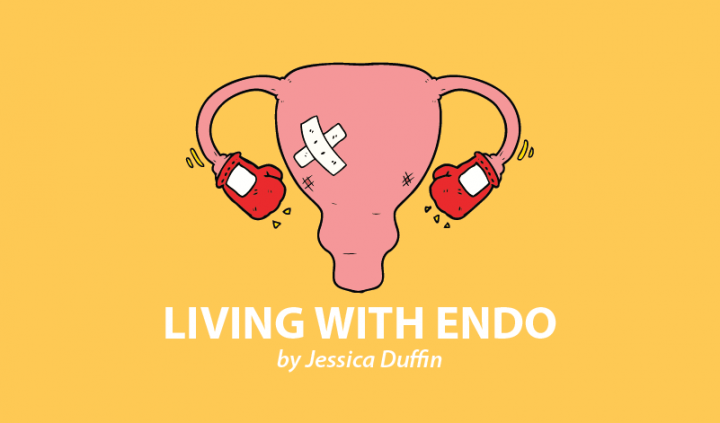This year, I’m releasing a new podcast episode every week. It’s a big challenge, but it gives me the opportunity to interview incredible guests about endometriosis and menstrual health much more frequently. I’ve just reached my second year of podcasts and wanted to reflect on everything I’ve learned about endometriosis since starting the show and share some of my insights.
Endometriosis doesn’t discriminate
A common misconception about endometriosis is that it can only happen to women. But this isn’t actually true. Trans men and nonbinary people can both have endometriosis, and in very rare cases, endometriosis has been found in men.
Having endometriosis and being nonbinary or trans brings up a host of issues that cis women with endometriosis do not have. They often face challenges with getting the right treatment and medical attention, judgment from society, fear and anxiety when trying to find a public bathroom to change their menstrual products, and the internal struggle they may experience when facing their period.
Additionally, they face exclusion from the endometriosis community. Many of us with endometriosis want to offer support to other warriors, and with great intentions, we use language that we don’t realize excludes trans men and nonbinary people from the conversation. Since speaking with my friend and activist Cori Smith, I’ve changed my language to use terms such as “people with endometriosis” and “mentstruators,” except when I’m referring to something specific, such as a study on women.
It can be tricky in the beginning to ensure our language is inclusive, as many of us exclude without realizing it. But listening to my interview with Cori is a great place to start. So is reading “Period Power” by Maisie Hill and checking out The Period Prince.
Everyone is different
The array of guests on my show has demonstrated to me just how different we all are when it comes to managing endometriosis. Our bodies do not all react the same way to treatments, and certain therapies or lifestyle changes affect people in different ways.
For example, in the early days of the show, I chatted with Jessica Murnane about our dietary choices. Although our diets were pretty much the same, it was clear that Jessica could tolerate some sugar in foods such as maple syrup and dates, whereas I can only eat sugar in small quantities without significant repercussions. Another example is Henrietta Norton, who can drink one cup of tea and one cup of coffee a day without it affecting her endometriosis symptoms, whereas I can only drink decaf on certain days of my cycle.
The list goes on and on in terms of our differences. And it’s not just my select group of guests that experience these variations; data described at the U.K. research conference Endometriosis Research Now! showed that different types of endometriosis have different origins and respond differently to treatment. So, sugar may be more of a trigger for you than for your best friend, not because you’re doing something wrong, but because you have a different type of endo.
The lesson? Don’t compare your story with those of others, and don’t judge others for the ways they manage endo, which may differ from yours.
Healing is holistic
When I started out on my endometriosis journey, I did everything I thought was right with my nutrition. I ate a super-strict anti-inflammatory diet but was bitterly disappointed when one slip-up, such as a cup of coffee, seemed to send me back to square one. I realized that I needed to support myself in more ways than one so that my pain relief wasn’t all dependent on my diet.
Over several of the show’s series, I’ve spoken to guests who experienced full relief only when they started healing through reiki, working with their chakras, addressing emotional issues, changing their relationship with their bodies, or seeking some kind of mental health therapy if needed.
From these discussions and my own research, I began extending my areas of healing, moved away from focusing solely on my diet, and took a more whole-person perspective. This ranges from the physical to the spiritual. I’ve since implemented supplements, yoga, exercise, and gut-friendly foods, as well as meditation, hypnotherapy, psychotherapy, and various forms of spiritual healing and exploration such as tarot and chakra healing.
As I dive more into the impact of stress, environment, and emotional pain on our physical health in my Women’s Coaching Course, I can now understand why addressing just one area of our health won’t equal health overall.
So, if you’ve done everything you can diet-wise, perhaps it’s time to take a more holistic approach and look at your relationship with your body, your sleeping habits, or any trauma you may have experienced in the past.
***
Note: Endometriosis News is strictly a news and information website about the disease. It does not provide medical advice, diagnosis, or treatment. This content is not intended to be a substitute for professional medical advice, diagnosis, or treatment. Always seek the advice of your physician or other qualified health provider with any questions you may have regarding a medical condition. Never disregard professional medical advice or delay in seeking it because of something you have read on this website. The opinions expressed in this column are not those of Endometriosis News or its parent company, BioNews Services, and are intended to spark discussion about issues pertaining to endometriosis.

